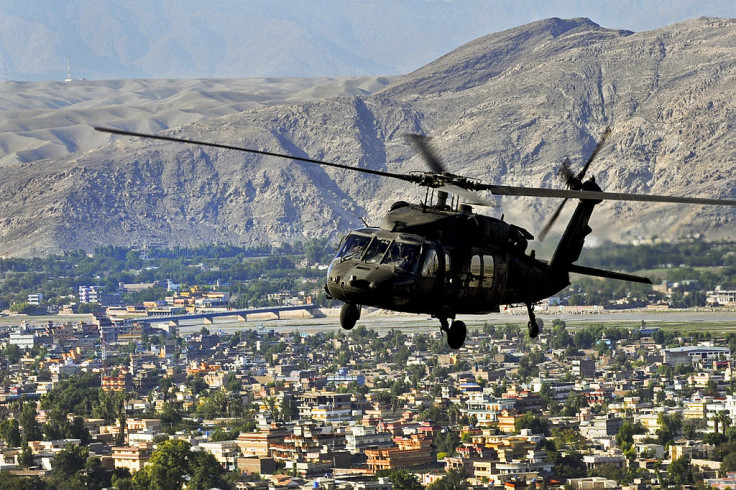Unmanned self-flying Black Hawk military helicopter one step closer to reality

Unmanned versions of the infamous Black Hawk military helicopter could soon become a reality for militaries around the world, as a self-flying Black Hawk has passed a critical test in the US, demonstrating both autonomous helicopter flight as well as robot teamwork.
The Black Hawk, also known as the UH-60A, has been produced by defence manufacturer Sikorsky Aircraft since 1974 and is widely used by the US Army, the Japanese Self-Defense Forces, the Colombian Armed Forces, the Jordanian Air Force and the Turkish Armed Forces.
In March, a Black Hawk helicopter on a training mission crashed at speed into the waters of Santa Rosa Sound in Florida. All 11 men on board, who were from the US Marines and the Louisiana Army National Guardsmen, perished.
While it is not the first time this has happened, if it were possible for helicopters to carry out missions by themselves, this would take the risk to human lives away. So in 2014, Sikorsky announced it would build an unmanned version of the Black Hawk that could either fly autonomously or be remotely piloted.
"[The unmanned helicopter] came in, picked up [a robotic amphibious all-terrain vehicle (AATV)], flew five to seven kilometres in an air route, delivered it to a ground location and released it," Paul Rogers, who directs Army's Tank Automotive Research Development and Engineering Center (TARDEC), told the Unmanned Systems Defense conference in Pentagon City, according to Defense One.
"The unmanned ground vehicle moved through a 10km scenario where it faced different chemical, biological hazards and then fed that data back via satellite."
The technology demonstrated by Sikorsky involves a software and hardware solution called Matrix, which enables the helicopter to fly by itself and make decisions about steering to keep itself safely even when flying in a low altitude environment rich with obstacles. The solution does not just work with new helicopters – it can also be installed in the 2,500 or so existing UH-60A Black Hawk helicopters being used by the US Army.
"The autonomous Black Hawk helicopter provides the commander with the flexibility to determine crewed or un-crewed operations, increasing sorties while maintaining crew rest requirements," said Mark Miller, Sikorsky vice-president of research and engineering, in 2014. "This allows the crew to focus on the more 'sensitive' operations and leaves the critical resupply missions for autonomous operations without increasing fleet size or mix."
The test flight is the most important demonstration of Matrix and the unmanned Black Hawk to date, and it showed the helicopter could cooperate with the AATV robot, but there is probably more yet to come, since Lockheed Martin acquired Sikorsky in July.
Lockheed Martin is also working on its own unmanned helicopter, in partnership with Kaman Aerospace Group. In November 2014, the two firms showed off the K-Max, a robotic helicopter able to complete resupply missions for troops and fight fires. If Sikorsky's robotics technology was added to the K-Max, the result could be a highly sophisticated helicopter drone that could be managed from afar.
© Copyright IBTimes 2025. All rights reserved.






















